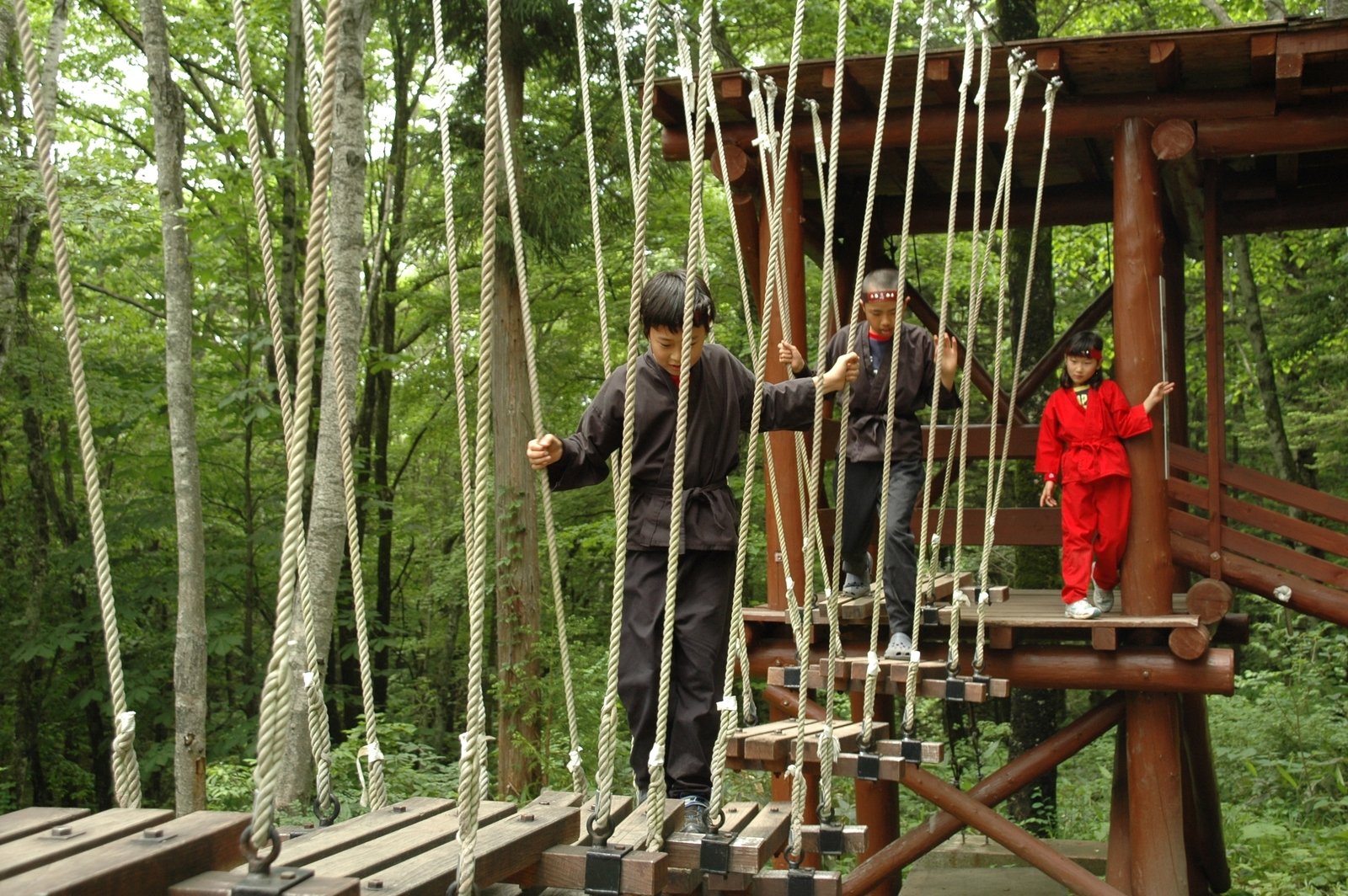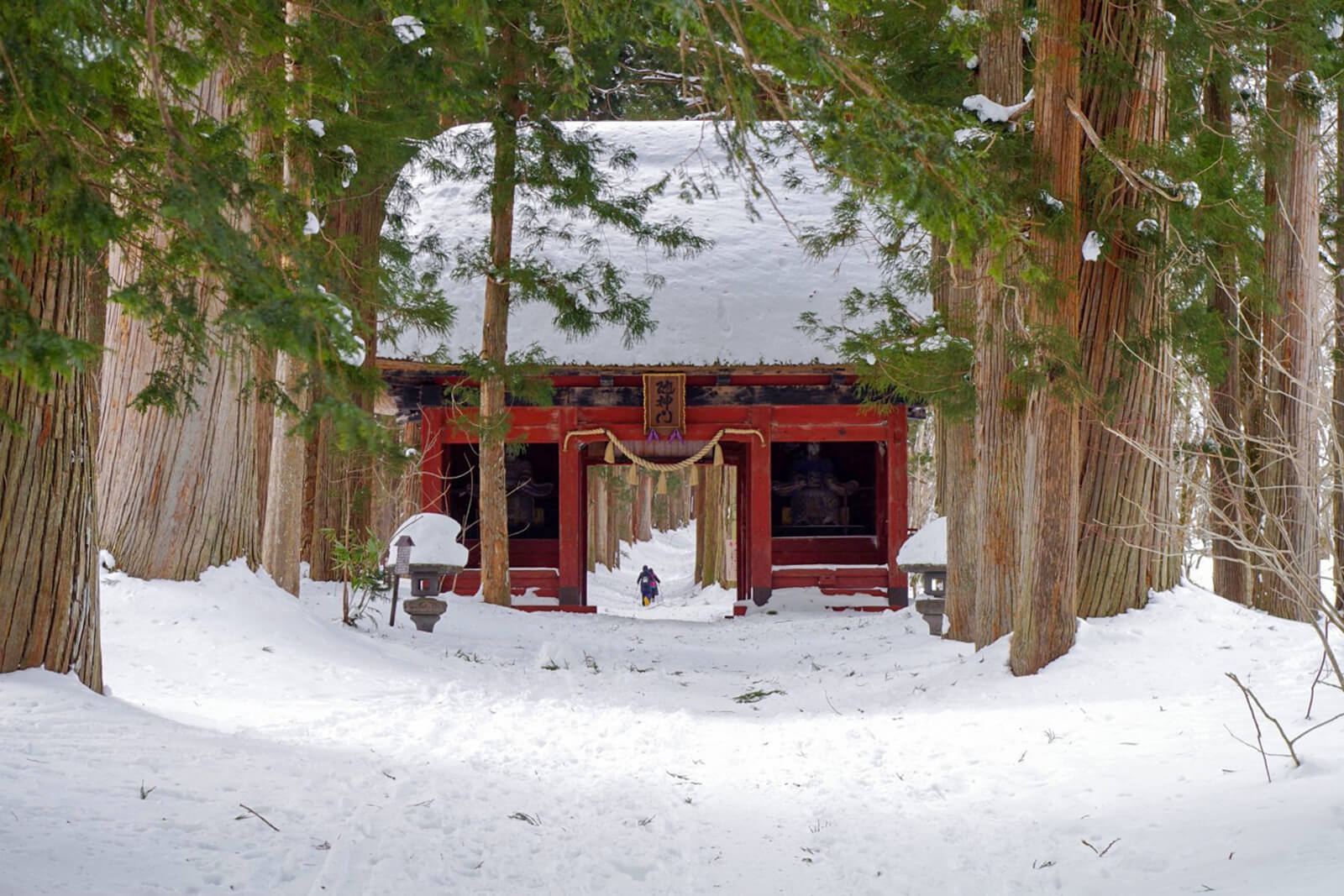Visiting the Five Shrines of Togakushi
The Togakushi Five-Shrine Pilgrimage Hike gives travelers the opportunity to enjoy the natural beauty of Mt. Togakushi and its ancient Shinto sites at the same time.
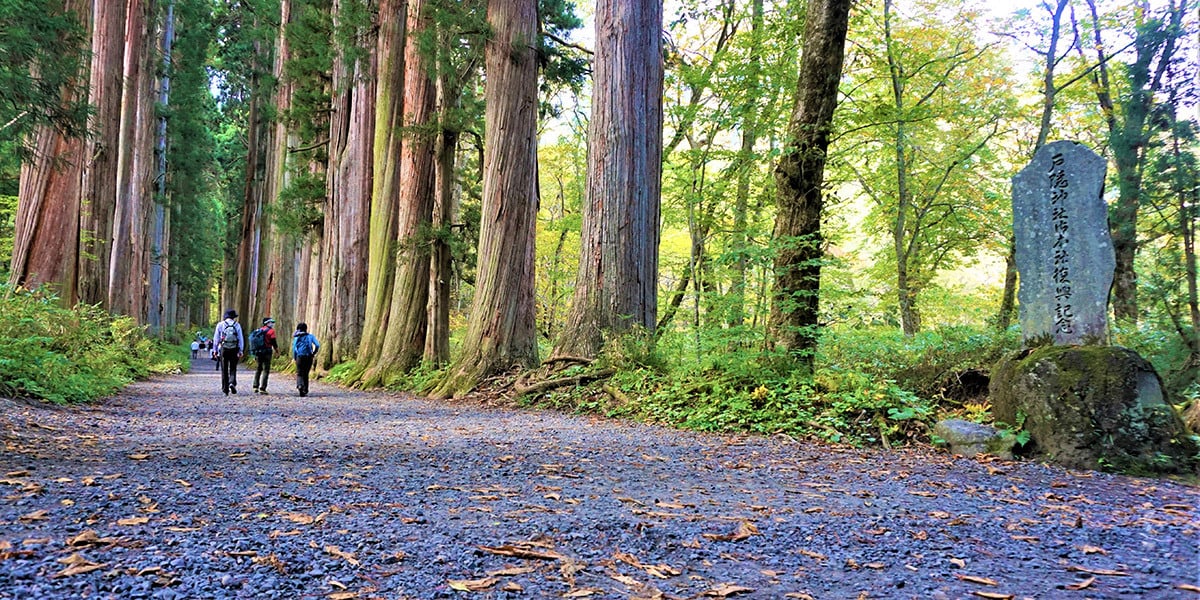
Japan is quite an old country, and there are many places throughout its islands that are associated with ancient legends. Over time, many of these legends were codified as Shinwa, stories of Japan’s Shinto religion. One such place is Togakushi. This forested highland plateau has long attracted religious pilgrims and mountain ascetics seeking enlightenment. Their aim: to visit Togakushi’s five shrines and its eponymous, towering peak. Walk along their same path and you’ll begin to understand Shinto for yourself—how Japanese people came to see the gods dwelling in everything around them from towering trees to even the smallest saplings.
Mountain of Legend: Mt. Togakushi
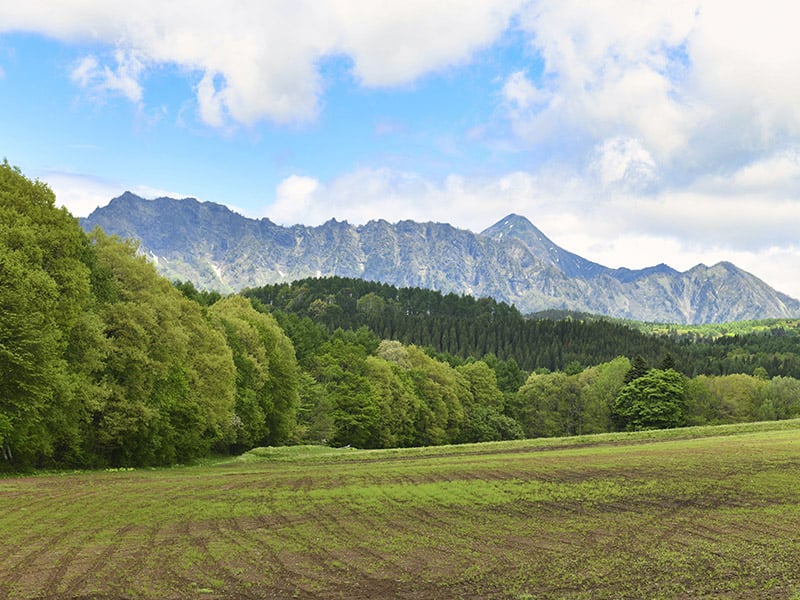
This forested plateau, covered in the shadow of towering Mt. Togakushi, is rooted in Japanese legend. Specifically, the story of Amano-Iwato, or Heaven’s Rock Door:
Long, long, ago, the goddess of the sun, embarrassed by her brother’s behavior, hid in a cave and sealed the entrance with a rock. Without her light, the world went dark. So, the other gods worked in unison to bring her out of this darkness. The god of wisdom proposed holding a festival; the goddess of the arts danced to get the goddess of the sun’s attention and the other gods laughed and cheered merrily. When the sun goddess moved the rock to sneak a peek, the god of strength grabbed the rock and threw it into the sky with all their might, thus restoring light to the world.
Mt. Togakushi is considered the rock door of the Amano-Iwato legend. It is a place where gods dwell and the setting of numerous other stories. It is a prominent destination for mountain worship in Japan.
Togakushi Five-Shrine Pilgrimage Hike
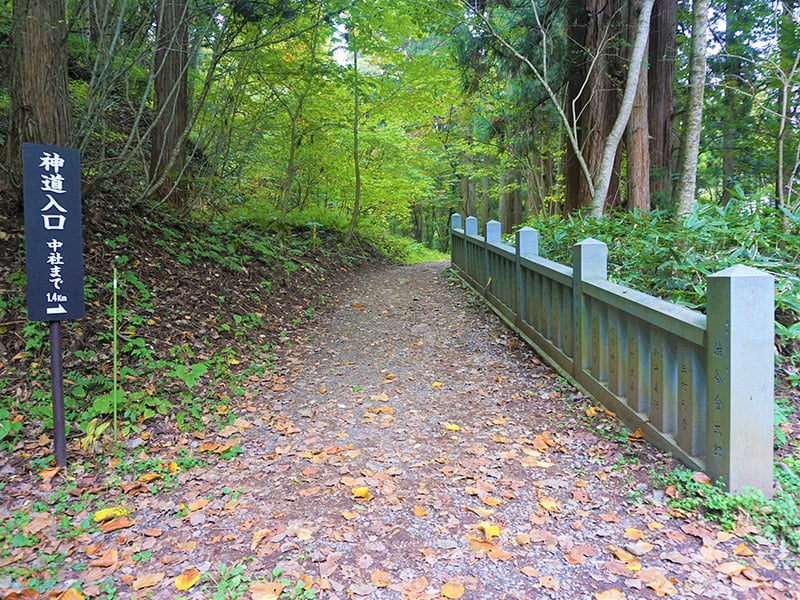
Five shrines were established at the foot of the mountain, each enshrining its own deity, many of which played a role in the legend above.
The Togakushi Kodo trail connects the five shrines, passing the Hokosha, Hinomikosha, and Chusha shrines before reaching the Kuzuryusha and Okusha Shrines at the base of Mt. Togakushi. While the trail begins much earlier, the portion between the Hokosha and Okusha shrines is about 5.5 kilometers long and takes 2.5 to 3 hours to complete.
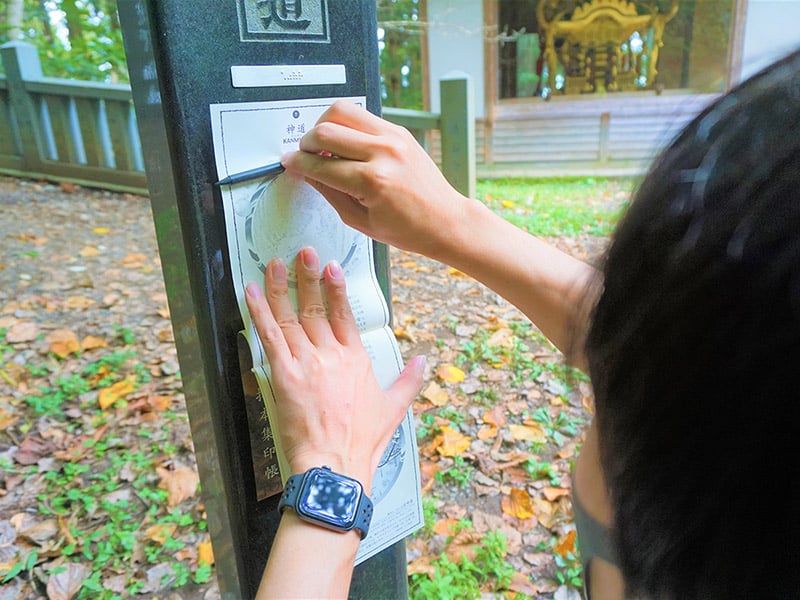
You can purchase a special book called Takuhon Shuincho in which you collect rubbings at different locations on the trail. There are 30 stone pillars in total to visit. These rubbings showcase some of Togakushi’s most iconic scenery and make for a great keepsake of your journey.
Hokosha Shrine
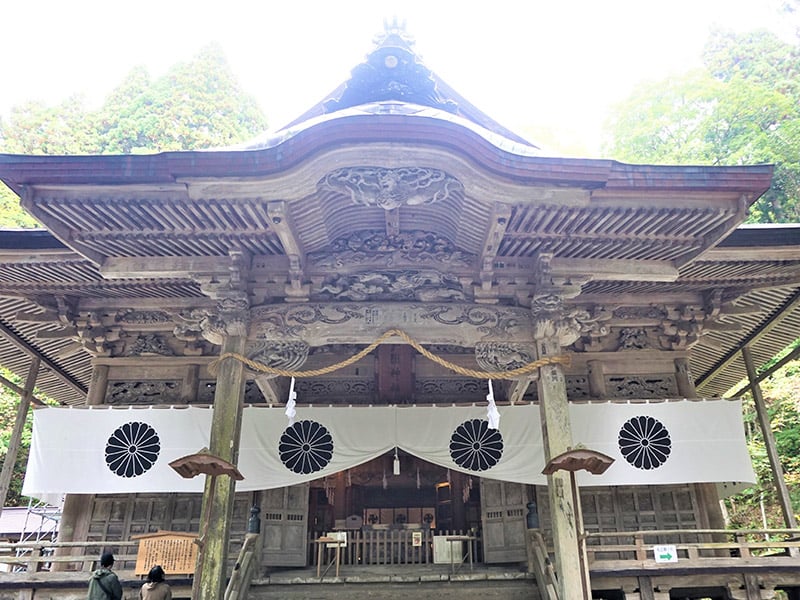
The Hokosha shrine sits at the lowest altitude and is the first one visited by most worshippers. Here, the god of learning and the arts is enshrined. Traditionally in Japanese mountain worship, women were forbidden from entering the mountains. According to the history of Mt. Togakushi, it was built for the women prohibited from traveling deeper into the mountain. For this reason, the god is also recognized as a guardian of women and children, and some women come to pray for safe childbirth.
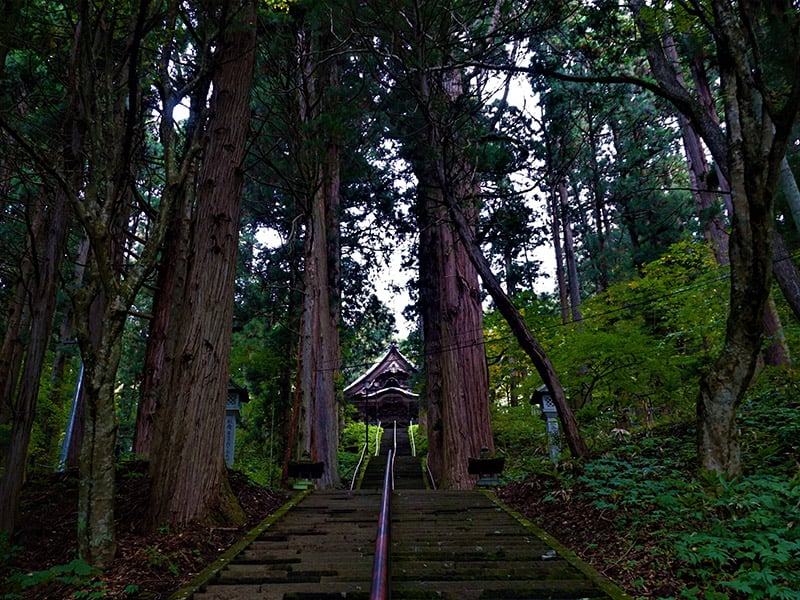
Are you ready for a climb? The shrine pavilion is at the top of a 290-step staircase. With each step towards the top, you will feel your anticipation building.
The goddess enshrined here is the daughter of the god of wisdom. A ritual or festival is held here every seven years to bring the father and daughter together. During the ritual, the goddess rides in a golden, portable shrine from the Hokosha Shrine to meet her father at the Chusha Shrine.
The shrine is adorned with the chrysanthemum crest used by the emperor. Perhaps, for this reason, the carved reliefs at Hokosha Shrine are the most gorgeous of the five Togakushi shrines, and these reliefs were carved 150 years ago. One story tells of the visit by the creator of the Kirin beer logo who visited this shrine for inspiration before creating their logo.
Hinomikosha Shrine
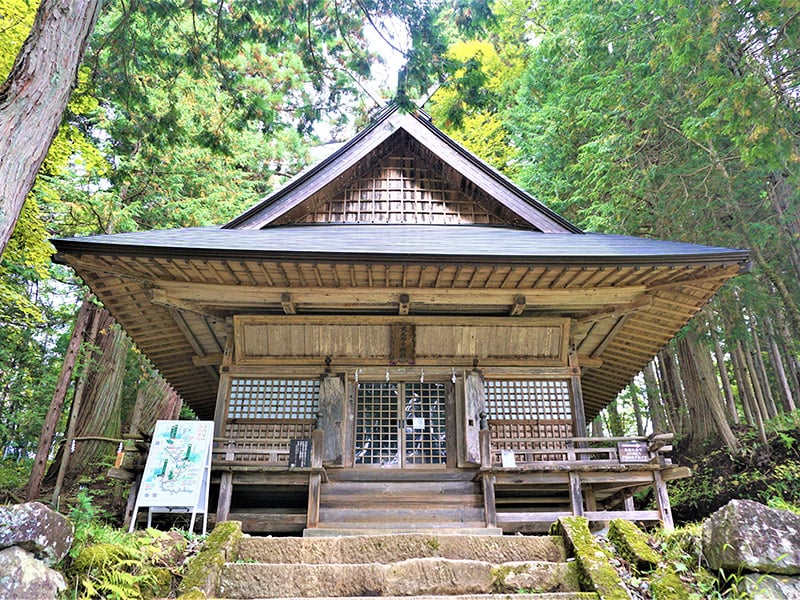
A 15-minute walk brings you to Hinomikosha Shrine, where the goddess of the arts, who danced to lure sun goddess out of the cave, is enshrined. Unlike the Hokosha Shrine, this shrine has no reliefs and is a modest structure.
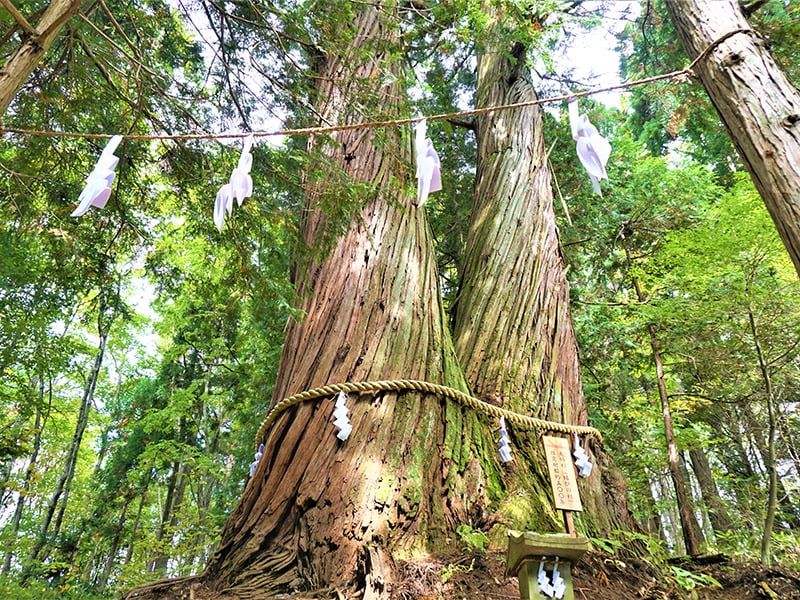
A 500-year-old cedar tree with a split trunk stands to the back left of the shrine. The two trees stand side by side like a married couple, earning it the name Meoto-sugi, the married couple cedar.
Chusha Shrine
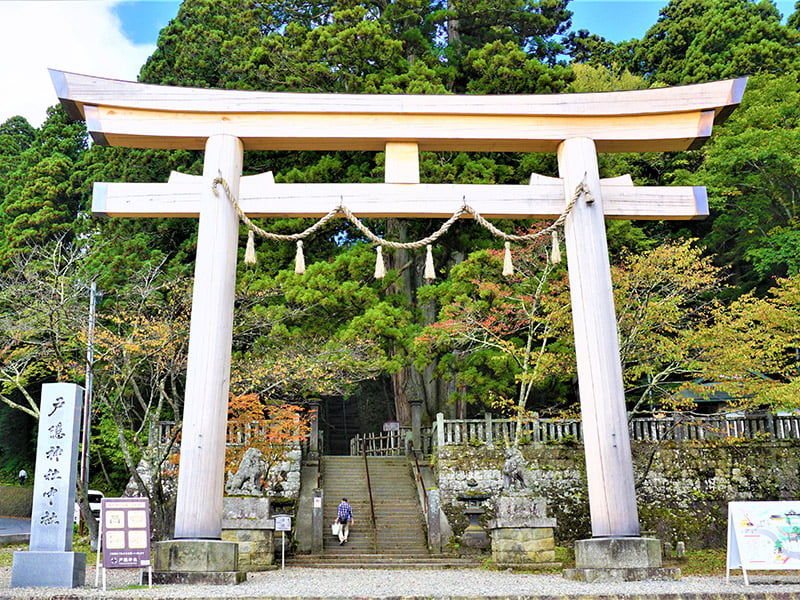
When leaving Hinomikosha Shrine another fifteen-minute walk will bring you to Chusha Shrine. An 11-meter-tall torii gate, held together with nothing but complex joinery, greets visitors to the shrine. At the foot of the gate is the Kutsuishi, stones that the gate rests on with nothing connecting the two. The torii gate exudes a dignified and solemn aura.
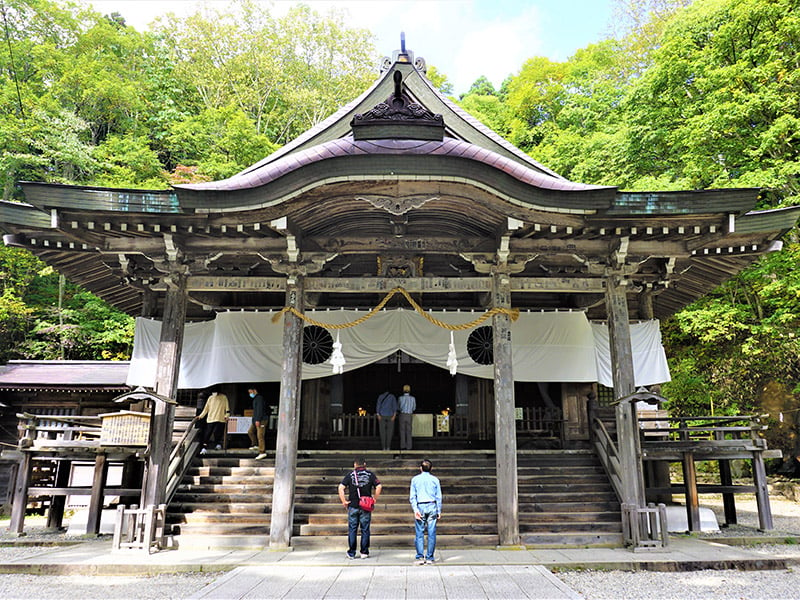
As you walk up the stairs, the shrine appears before you. Enshrined here is the god of wisdom, who crafted the plan to lure the sun goddess out from behind the rock. People believe that worshipping the god of wisdom brings academic success and business prosperity.
Zuishinmon Gate and Togakushi’s Lane of Cedars
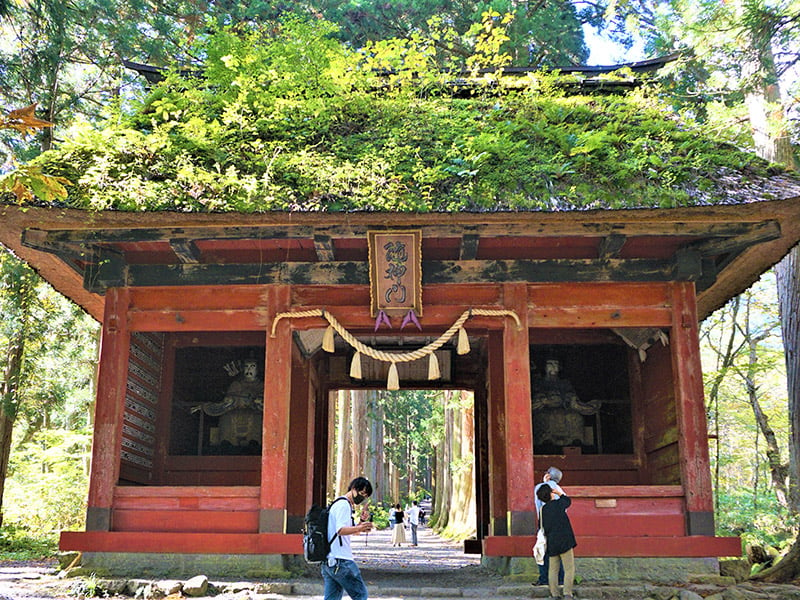
The last two of Togakushi’s five shrines are at the end of a nearly straight, 2-kilometer-long trail. In the middle of this path is the Zuishinmon Gate. A majestic gate with plants growing on the roof stands powerfully a symbol of the mountain faith where god and nature are one.
Once you pass through the gate, a breathtaking row of giant cedars stands in front of you. More than 200 cedars, some 400 years old, stand side-by-side, and each tree radiates powerful energy that you will feel as you walk along the path.
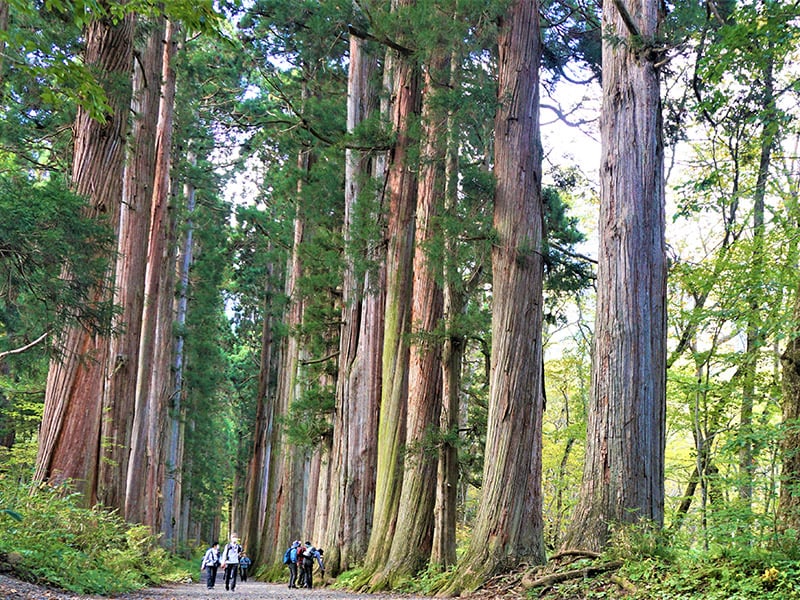
Kuzuryusha and Okusha Shrines
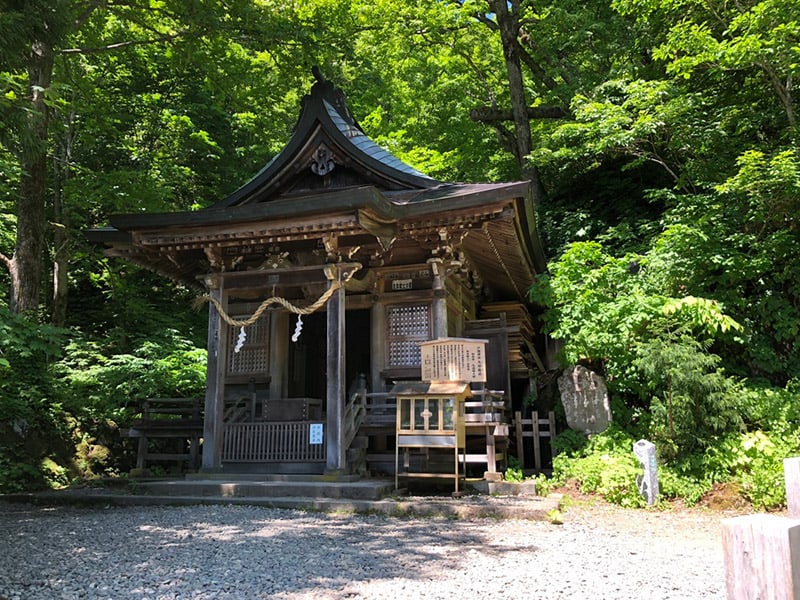
Passing through the Zuishinmon gate and walking another kilometer, brings you to Kuzuryusha Shrine and Okusha Shrine. The former enshrines a nine-headed dragon, which governs water. Farmers make prayers for rain here. In addition, it is also worshipped as a god of matchmaking.
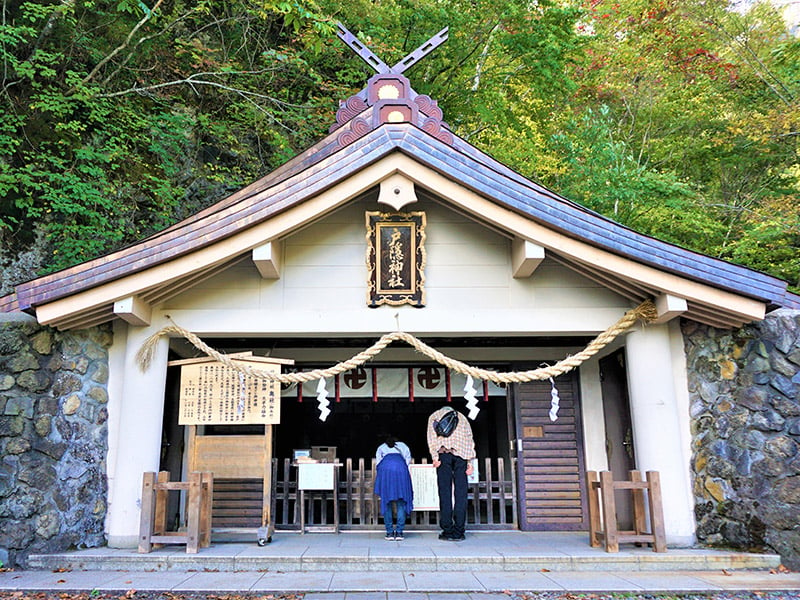
The Okusha Shrine is the innermost of the five Togakushi shrines. The shrine enshrines the god of strength, who moved the rock so that Amaterasu could come out of hiding. Okusha Shrine is considered the most important of the five Togakushi shrines. People from all over the country come here to pray for good luck, fulfillment of wishes, bountiful harvests, and triumph in sports.
Wrapping up
The Togakushi Five-Shrine Pilgrimage Hike gives travelers the opportunity to enjoy the natural beauty of Mt. Togakushi and its ancient Shinto sites at the same time. As you glimpse upon its towering cedars and formidable cliffs, you may feel the area’s spiritual energy that has attracted pilgrims here for generations—an inaudible hum that has resonated since the mountain first landed here millennia ago.
Directions to Togakushi
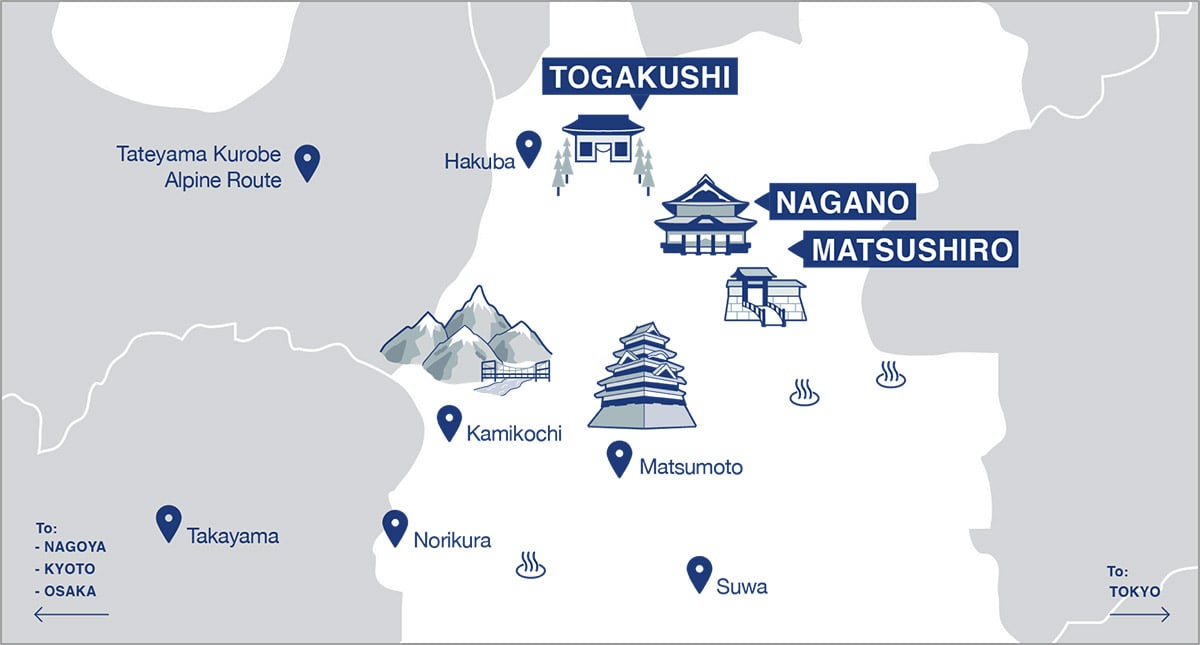
You can drive to Togakushi, about 60 minutes northwest of Nagano Station, or go by bus from Bus Stop No. 7 located across the road from Nagano Station Zenkoji exit. Tickets can be purchased in advance and can be done either online or in person at ALPICO Kotsu Nagano Station Ticket Office.
Although you can pay your fare on board by cash or contactless-enabled VISA cards (IC cards like Suica are not accepted), it is recommended to reserve your seats in advance to ensure a spot.
For the most up-to-date information on bus timetables to Togakushi from Nagano Station, please check directly on ALPICO's website here.
Note: During winter the bus does not stop at Togakushi Okusha. To get there, get off at Togakushi Chusha Shrine and walk approximately 30 minutes or catch a taxi up to Okusha Shrine's entrance.

